Have you ever visited a winery or driven past a vineyard, taken a look at the vines and thought… “I wonder what variety that is?”
Identifying vine varieties without a DNA test isn’t the easiest thing to do. And while I’m certainly not going to turn you all into pro ampelographers (that’s the name for a botanic specialist focusing on grapevines) I am going to give you a few tips on how to make an educated guess the next time you’re in a vineyard*.
*not that I condone walking through someone’s vineyard due to the risk of spreading phylloxera, but that’s a story for another day!
LEAVES
The most important clue to identifying the grape variety is the leaf. It should be a full-grown leaf to properly show the characteristics. There are several things to look for. Here are the most important:
- The size
- The colour
- The overall shape
- The number of lobes
- Is it flat or waffley (technical term)?
- Is it smooth or hairy (mainly on the back)?
- The pattern and distribution of the “veins”
BUNCHES
The second thing to look at is of course the grape bunches. Obviously, that’s a bit more difficult to do unless it is close to harvest time. Here are some of the important things to observe:
- The colour and the depth of that colour
- The size of the bunches
- The size of the berries
- The shape of the bunches. Are they cone-shaped? Cylindrical? With two parts, a big main part and a small “ear” to the side?
- How compact are the bunches? Are they tight or loose?
- Where on the vine are they attached?
- The thickness of the skin
EVERYTHING ELSE
There are other clues that help identify the variety:
- How do the branches grow?
- Are they rigid and self-supporting or tend to fall down on the ground?
- The colour and texture of the wood and bark.
- The appearance of the buds
Now, that’s a lot of detail to cover for each variety, so how about we just stick with the leaf and the bunch to start with. And the best way to do that is to have a look. I’m borrowing heavily from a post I found on this Argentinian website. I’ll throw in a couple of my own photos, but that site had some nice clear visuals to work with – so thanks random Argentinian website!
Also, before we start, I’m just going to leave this image of the parts of a vine leaf here. I’ll be using some of these terms, so it might be handy to refer back to…
WHITE VARIETIES
Chardonnay
Leaf: medium-sized, with a low density of veins. It is composed of five lobes that give the leaf a pentagonal shape.
Bunch: small, they reach a mid to high compactness. Cone-shaped.
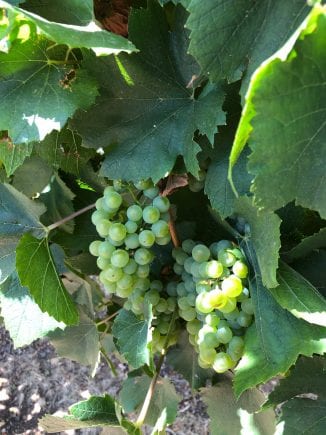
Sauvignon Blanc
Leaf: Contorted (waffley), medium-sized and round in shape.
Bunch: Small size, very compact and uniform which causes deformation in the berries due to the pressure on them. The stalk is really short.
Semillon
Leaf: contorted with five clear lobes. The sinus of the leafstalk is U-shaped.
Bunch: medium-sized, cone-shaped with spherical berries. It presents a golden yellow color.
RED VARIETIES:
Cabernet Sauvignon
Leaf: Medium-sized, composed of 3-5 lobes that overlap creating “holes”. The sinus of the leafstalk is U-shaped.
Bunch: small, compact and cone-shaped. With small and spherical berries, of bluish-black color.
Tempranillo
Leaf: large-sized and is composed of 5-7 lobes which are slightly overlapped, forming a pentagon. Lots of zig-zaggy teeth.
Bunch: large size, with marked shoulders, compact, uniform size and color.
Merlot
Leaf: large-sized, composed of 5 lobules well-differentiated and slightly overlapped.
Bunch: medium to small size, medium compactness, marked shoulders and short cone shape.
Shiraz
Leaf: flat central lobes or asymmetrically folded with their lateral sides pointing up.
Bunch: Long and cylindrical. Medium-sized, compact and really full.
Pinot Noir
Leaf: medium-sized and pentagonal in shape. Composed of 3-5 lobules which are slightly overlapped. Its shape is said to be like that of an inverted Pine tree (hence the name”Pinot”).
Bunch: Small-sized with a high degree of compactness. Medium to small-sized berries.
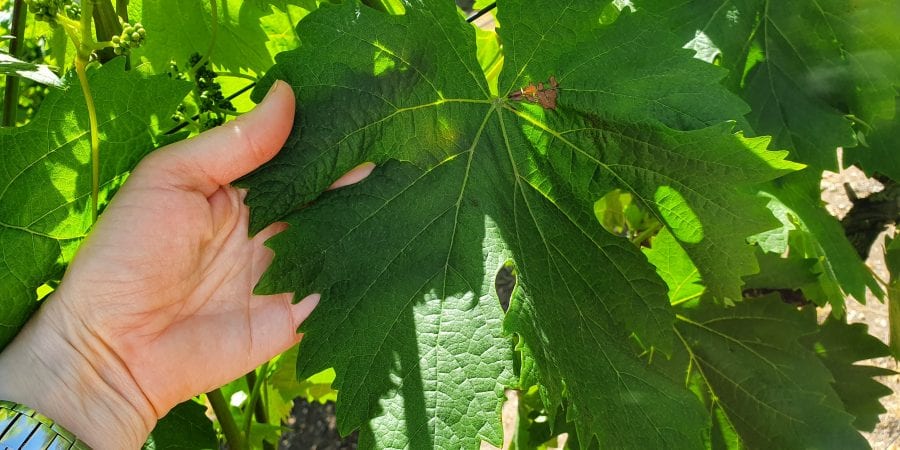
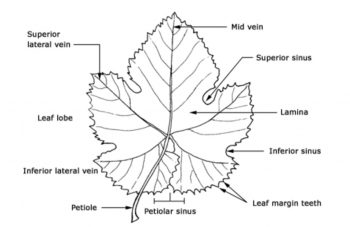
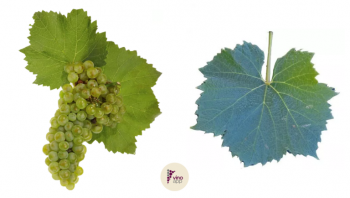
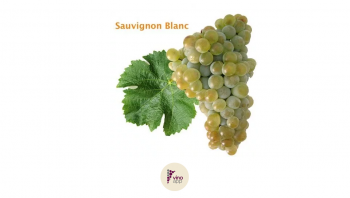
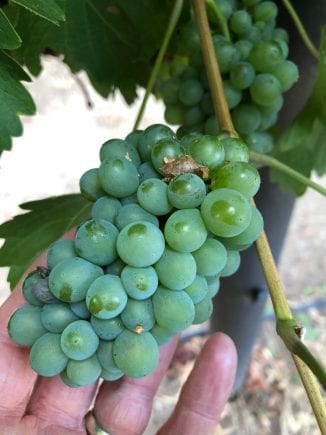
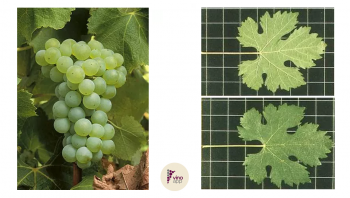
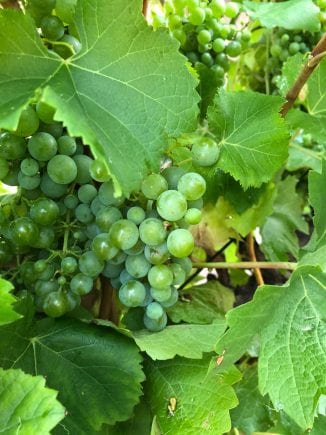
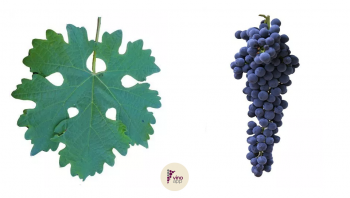
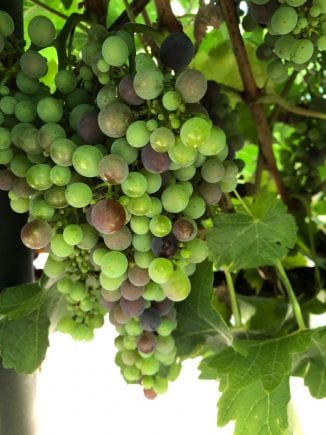
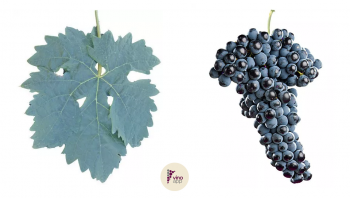
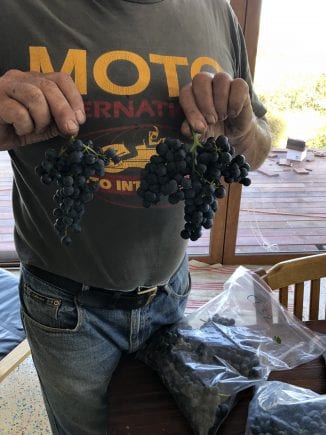
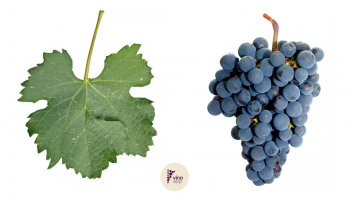
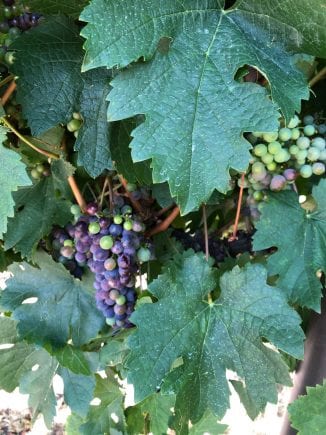
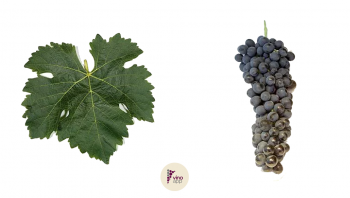
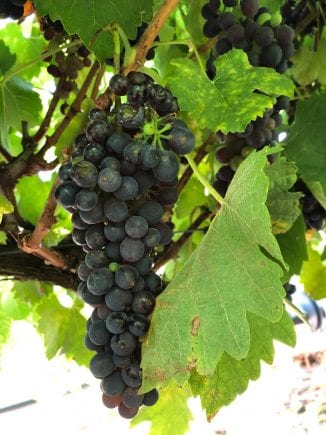
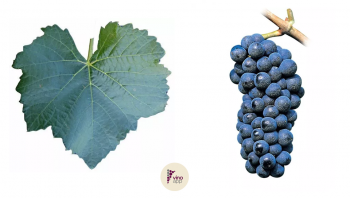
Very educational, Maree. I think only someone with a sustained interest in botany would be able to retain all those details. Maybe you and Rob…….And, the sinus of the leaf-stalk is “U” shaped, to you, too!
Rick H